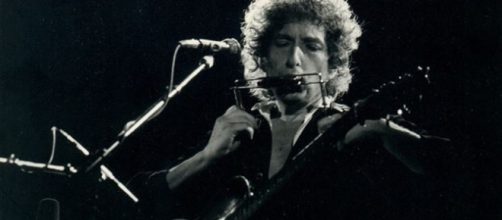There's no doubt that in the first half of the 1960s Bob Dylan actively contributed to change the course of American music. He won a Nobel Prize in 2016 and so, according to many voters, he changed the course of American literature too.
The three LPs he recorded during the simple turning of a year, from March 1965 to May 1966, are musically speaking among the most important in the pop music history and it's not hard to agree with the critics who assume "Blonde On Blonde," 1975s "Blood On The Tracks" is the last great record in his entire discography.
Every fan has the right to choose his favourite artists and musicians. But if someone wants to build and maintain an adult kind of nearness with the celebrity he loves, he doesn't only have to read the lyrics that are written on paper. Furthermore, he doesn’t only have to listen to the songs cut on the albums.
It is right and appropriate to take a look at the biographical notes and facts too. They are essential to form a complete opinion of an Artist, especially when the fan is a multi-faceted and multi-layered one, just like the protagonist of this essay.
Bob Dylan had a notorious motorcycle crash in 1966 and while he was convalescing, or just because he was, he locked himself with the members of the famous group, the Band inside Big Pink where for some time they led a sort of communal life.
This was an incredibly fruitful worktime for Bob Dylan and every skeptical or devoted fan could gain full awareness of this in late 2014 when the "Complete Basement Tapes" 6-discs boxset was published. Maybe it's not rash to say that this big opus is the ideal companion to the "Anthology of the American Folk Music." The gorgeous compilation was curated by the ethnomusicologist Harry Smith and includes a huge amount of songs and musicians previously recorded only on "78 rpms", between 1927 and 1932.
Needless to say, the "Complete Basement Tapes" is a real milestone and an authentic gold mine. But what can we say about the political Bob Dylan and the side of his artistic personality he, at the very beginning of his career, wanted to be best known and estimated for?
Did they suddenly disappear? And, above all, do we have to think the disappearance was fair?
In the early 1960s, when he first arrived in New York City, Bob Dylan did everything he could (and more) to be accepted inside the Greenwich Village movement, the group of personalities who were working to connect the dots among music research, poetry, and political issues. Pushing himself through with the strength of a wild beast, Bob Dylan claimed for himself a relevant place (probably, the most relevant). When it came to writing politicised songs and to show a true social and political commitment he, in fact, was sure that nothing really compared to him. But after a few years passed, near the end of the 1960s, it was plain that Dylan wanted to abruptly change his mind and his points of view.
Bob Dylan, exploiter in disguise
It was 1968-69 and the USA were at the peak of one of the worst and cruelest times of their history. Blood was shed over the Democratic Convention in Chicago. Black people were still struggling for their civil rights and their two main spokesmen were killed or were going to be killed. Too many young lives were senselessly interrupted.
Where was Bob Dylan, during horrific times like these? He hid inside his quiet and comfortable country house, which was surrounded by a not-so-friendly pack of dogs. The artist wanted not to be disturbed by the multitude of his fans.
The aforementioned issues needed Dylan’s active presence on the field but he was turning his back on the people who were fighting.
He was quietly relaxing and spending his days strumming fine but easy old-time and popular songs and writing harmless lyrics about the pleasures of domestic tenderness and the good taste of a well-baked country pie.
What does this aloof and selfish character have in common with the certified and mighty artist that just a few years earlier required to be the undisputed commander in chief of the social and political America? Nobody, of course, would have upset his stillness if he, just from the beginning, had introduced himself as nothing but an easy-listening singer, or if he had said, for example, “I'm your new Pat Boone” or “I'm a sort of a Paul Anka replica.”
The problem is Bob Dylan had asked the Village movement to give him the highest credits and credentials, simply because he was believed to be great and trustworthy.
He was, in short, a remorseless exploiter and his sole 1964 album, aptly titled "Another side of Bob Dylan," contains nothing but a series of self and protest songs' parodies, though it was conceived as a sort of a self-absolution to unburden his soul.


